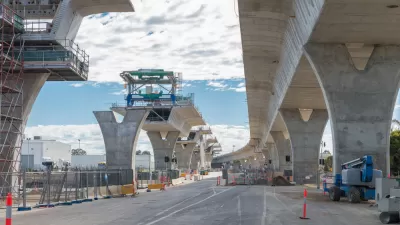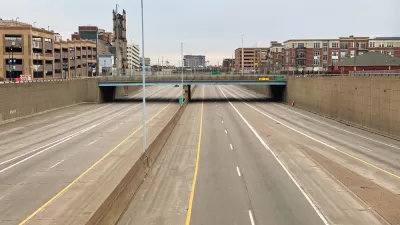How the "road tribes" — the impenetrable scrum of bureaucrats, politicians and industry that benefit from an ever-expanding program of road construction — are literally paving the road to national ruin in Japan.
"The results have been a disaster. Certainly, Japan has a lot of roads: four to five times the number of any other Group of Seven country when measured by kilometers of road to usable land. The trouble is, a lot of these roads are in places where they are not needed. The country has an impressive network of toll roads that will never be profitable. It has expressways that connect industrial parks to ports and airports that industries do not want to use, and monumental bridges that suck people and money out of rural towns rather than reviving them. Yet despite decades worth of road and other infrastructure projects, projects that people actually need remain undone: In 2007 the government identified 110,000 km of roads where there was a high risk of accidents because, for example, children used them to walk to school (including 40,000 km of streets lacking separated sidewalks!). Adding sidewalks to streets used by small children simply doesn't fit the agenda of the road tribes as well as a four-lane expressway to nowhere does."
FULL STORY: Japan's many roads to ruin

Alabama: Trump Terminates Settlements for Black Communities Harmed By Raw Sewage
Trump deemed the landmark civil rights agreement “illegal DEI and environmental justice policy.”

Planetizen Federal Action Tracker
A weekly monitor of how Trump’s orders and actions are impacting planners and planning in America.

The 120 Year Old Tiny Home Villages That Sheltered San Francisco’s Earthquake Refugees
More than a century ago, San Francisco mobilized to house thousands of residents displaced by the 1906 earthquake. Could their strategy offer a model for the present?

In Both Crashes and Crime, Public Transportation is Far Safer than Driving
Contrary to popular assumptions, public transportation has far lower crash and crime rates than automobile travel. For safer communities, improve and encourage transit travel.

Report: Zoning Reforms Should Complement Nashville’s Ambitious Transit Plan
Without reform, restrictive zoning codes will limit the impact of the city’s planned transit expansion and could exclude some of the residents who depend on transit the most.

Judge Orders Release of Frozen IRA, IIJA Funding
The decision is a victory for environmental groups who charged that freezing funds for critical infrastructure and disaster response programs caused “real and irreparable harm” to communities.
Urban Design for Planners 1: Software Tools
This six-course series explores essential urban design concepts using open source software and equips planners with the tools they need to participate fully in the urban design process.
Planning for Universal Design
Learn the tools for implementing Universal Design in planning regulations.
Clanton & Associates, Inc.
Jessamine County Fiscal Court
Institute for Housing and Urban Development Studies (IHS)
City of Grandview
Harvard GSD Executive Education
Toledo-Lucas County Plan Commissions
Salt Lake City
NYU Wagner Graduate School of Public Service





























